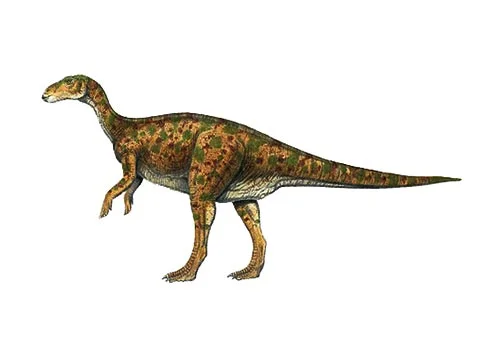Gilmoreosaurus (Gilmores’ lizard)

Gil-mor-o-sore-us
Charles W. Gilmore – 1933
Herbivore
Estimated 2.5-3 meters long
Euornithopod
G. mongoliensis (type), G. atavus, G. arkhangelskyi
Mongolia - Iren Dabasu Formation. Uzbekistan - Khodzhakul Formation, Bissekty Formation, United States – Two Medicine Formation in Montana.
Late Cretaceous, 74-68 million years ago
Gilmoreosaurus Facts
Gilmoreosaurus, meaning “Gilmore’s lizard,” is a genus of herbivorous ornithopod dinosaur that lived during the Late Cretaceous period, around 74 to 68 million years ago. Its fossils were first discovered in the Two Medicine Formation in Montana, United States, in the early 20th century and the genus was named and described by American paleontologist Charles W. Gilmore in 1933.
Gilmoreosaurus was a small dinosaur, measuring around 2.5 to 3 meters (8 to 10 feet) in length and weighing around 250 kilograms (550 pounds). It had a long, slender body, with strong hind limbs for fast running and jumping, and short, robust forelimbs for grasping and feeding.
One of the most distinctive features of Gilmoreosaurus is its dental battery, which consisted of numerous tightly-packed teeth that formed a grinding surface in the back of its mouth. This adaptation allowed it to efficiently process tough plant material, which was likely a major part of its diet.
Based on the structure of its bones and teeth, paleontologists believe that Gilmoreosaurus was a fast, agile dinosaur that was capable of quickly fleeing from predators. However, it may have also relied on its powerful hind limbs to deliver swift kicks as a means of self-defense.
Gilmoreosaurus is an important dinosaur for paleontologists because it helps to fill in gaps in our understanding of the evolution and ecology of ornithopod dinosaurs during the Late Cretaceous period. Its small size and herbivorous diet contrast with the larger, carnivorous theropod dinosaurs that were dominant during this time, and its unique adaptations for feeding provide valuable insights into the ways that herbivorous dinosaurs adapted to consume tough plant material.
In conclusion, Gilmoreosaurus is a fascinating dinosaur that helps us to better understand the diversity and adaptations of herbivorous ornithopod dinosaurs during the Late Cretaceous period. Its small size, fast running ability, and unique dental adaptations set it apart from other dinosaurs, and its importance in the ecological context of its time underscores the complex and varied interactions between dinosaurs and their environments. As more fossils are discovered and studied, we are likely to learn even more about this interesting and important dinosaur and its place in the evolutionary history of ornithopod dinosaurs.



